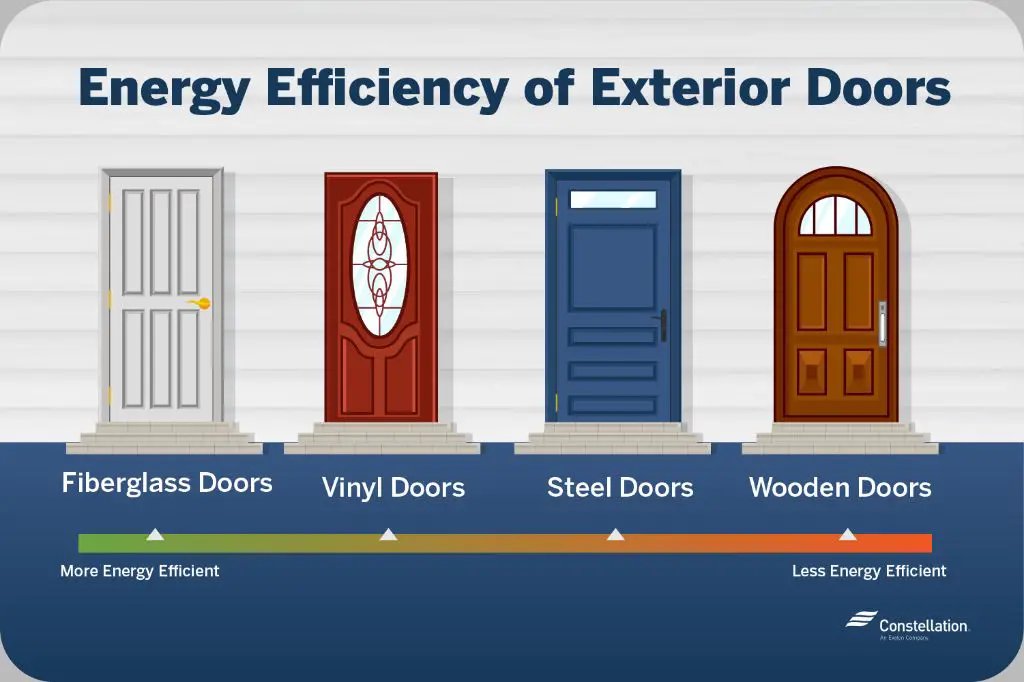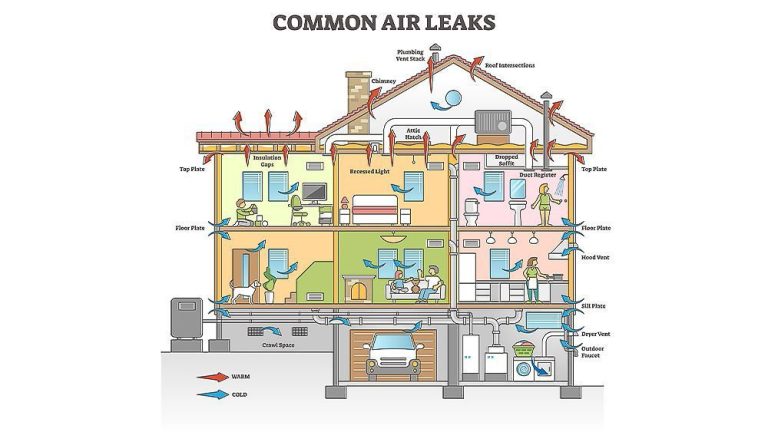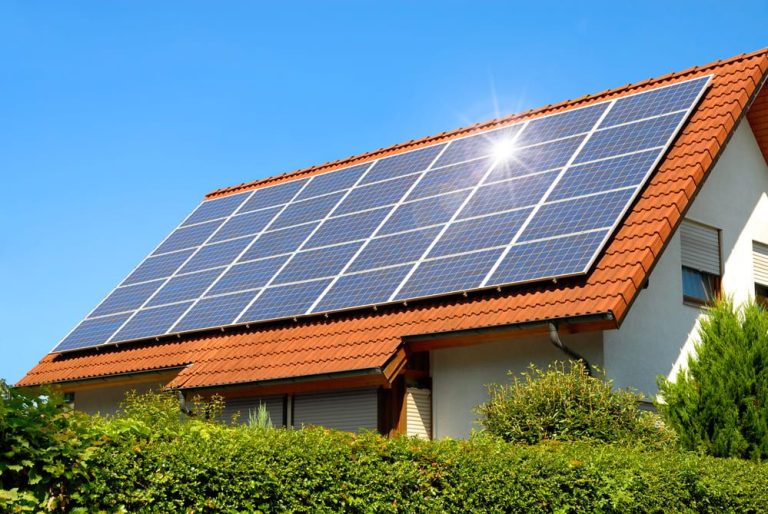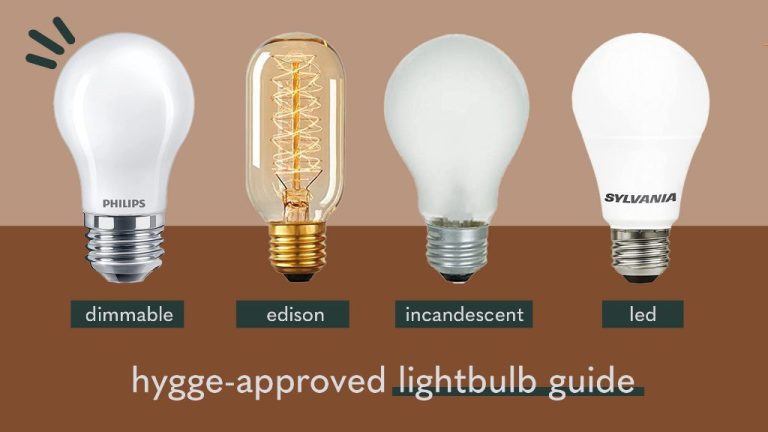How Do You Know If A Door Is Energy Efficient?
What Makes a Door Energy Efficient

The materials used to construct a door play a major role in its energy efficiency. Fiberglass is considered one of the most efficient options as it provides thermal insulation while still being durable. Composite materials made of polyurethane foam sandwiched between two steel or fiberglass skins are also excellent insulators. Solid wood doors can be energy efficient if they are made of insulated cores rather than hollow cores. According to the Department of Energy, insulated cores can have an R-value around 4 to 6 compared to 1 to 2 for hollow wooden doors (https://www.energy.gov/energysaver/doors).
Proper weatherstripping and seals are critical for minimizing air leaks around doors. High quality weatherstripping made of vinyl, rubber, felt, foam, or metal paired with sill seals and door sweeps can vastly improve efficiency. Multi-pane glass inserts with thermal breaks, low emissivity coatings, inert gas fills, and warm edge spacers also boost efficiency by reducing conduction and radiation heat transfer.
Window Ratings
There are several important ratings to consider when evaluating the energy efficiency of windows.
The U-factor measures how well a window prevents heat from escaping. U-factors typically range from 0.20 to 1.20 for windows. The lower the U-factor, the better the insulating performance. Look for U-factors below 0.30 for optimal efficiency (source).
R-value is the inverse of the U-factor, measuring resistance to heat flow. Higher R-values between 4-9 indicate better insulation and energy efficiency (source).
The solar heat gain coefficient (SHGC) measures how well a window blocks heat from sunlight. Look for a SHGC below 0.30 unless you need solar heat in winter (source).
Visible transmittance (VT) measures how much light comes through a window. Higher VT percentages allow in more daylight. A VT of around 0.5 is ideal for energy efficiency (source).
Air leakage ratings are also important. Windows rated low on air infiltration will better maintain indoor-outdoor pressure differences (source).
Door Labels and Certification
When shopping for an energy efficient door, there are two main certification labels to look for:
Energy Star
The ENERGY STAR program, sponsored by the U.S. Environmental Protection Agency and U.S. Department of Energy, sets efficiency standards for residential doors. To earn the ENERGY STAR label, a door must meet certain requirements for U-factor and Solar Heat Gain Coefficient (SHGC) which measure how well it insulates and blocks heat gain respectively. ENERGY STAR certified doors will have a label on the glass confirming they meet the program’s specifications.
NFRC Ratings
The National Fenestration Rating Council (NFRC) tests and rates windows, doors, and skylights for their energy performance. Look for a NFRC label on the door that provides the U-factor and SHGC ratings. The lower the U-factor, the better the insulation. Lower SHGC ratings reduce summer heat gain. Models with ratings of 0.30 or below are considered energy efficient.
Choosing an ENERGY STAR or NFRC certified door ensures you are getting a product that has undergone independent testing and meets strict energy efficiency guidelines. Also look for doors made with recycled materials to further reduce their environmental impact.
Assess Your Current Door’s Energy Efficiency
One of the best ways to determine if your current exterior door needs an upgrade for energy efficiency is to assess how well it’s currently performing. Here are some key things to inspect:
Drafts
If you can see daylight around the edges of the door or feel cold air coming in, your door likely has poor insulation against drafts. This allows heated or cooled air to escape, costing you more in energy bills. Checking for drafts on windy days can help identify any gaps.[Source]
Condensation
Excess moisture collecting on the inside of your door is a sign that warmth from inside is escaping and cooling on the exterior side. This condensation suggests poor thermal performance.[Source]
Noise
If you can hear a lot of outside noise coming through the door, that indicates gaps and lack of insulation. Energy efficient doors are designed to block sound for comfort and privacy.
Age
Doors over 20 years old likely lack the energy efficient features and technology found in modern replacements. Upgrading can provide better insulation and performance.
Compare Energy Efficient Models
When shopping for an energy efficient door, there are many factors to consider such as price, style, features, and brand. Generally, fiberglass and steel doors tend to be the most energy efficient options.
Fiberglass doors have an R-value around 4-6, making them excellent insulators. They are more expensive than steel, typically ranging from $800 – $2000. Popular brands for fiberglass doors include Therma-Tru, Pella, and Jeld-Wen. They come in a wide range of styles from modern to traditional.
Steel doors have an R-value of 17 or higher. They are an affordable option usually priced between $400 – $1200. Brands like Thermatru and ProVia offer steel doors in contemporary and classic looks. Insulated steel doors with a polyurethane or polystyrene foam core provide even better efficiency.
Other efficient options are wood composite doors made from a mix of materials. Brands like Plastpro produce composite doors with an R-value up to 6 for $600 – $1500. Modern flush designs and classic carved styles are available.
When comparing brands and models, look at the door’s R-value, materials, weatherstripping features, warranties, and certified efficiency ratings to find the right balance of efficiency, durability, and aesthetics for your home and budget.
Caulking and Weatherstripping
Properly sealing gaps around doors with caulk and weatherstripping is one of the most important steps for improving energy efficiency. Caulk is a flexible sealant used to fill cracks and gaps, while weatherstripping is used to seal areas where components join together. Here are some key tips on caulking and weatherstripping doors:
For caulking, choose a high-quality exterior-grade silicone or latex caulk. Carefully clean and prepare the area by removing any old caulk or debris. Apply the caulk in a continuous smooth bead and tool it into the crack using a putty knife. Allow proper drying time before exposing to rain or water.
For weatherstripping, common types include adhesive-backed foam strips, interlocking metal or vinyl seals, and compressible rubber gaskets. Measure the area needing sealing and cut strips to the proper length. Remove any existing weatherstripping, clean the surface, and apply. Make sure to only apply as much pressure as needed for an effective seal.
It’s important to properly weatherstrip areas where the door frame meets the wall studs, sides, head, and sill. Compressible door sweeps can seal the gap between the bottom of the door and threshold. Always follow manufacturer instructions for installation and maintenance.
With proper sealing techniques, caulking and weatherstripping doors can reduce air leaks, lower energy costs, prevent drafts, and enhance comfort in the home.
Proper Installation
Proper installation is crucial for ensuring an energy efficient door. Any gaps or air leaks around the frame will reduce efficiency. Here are some key steps for proper installation:
Sealing gaps – Apply caulk around the entire perimeter between the door frame and the rough opening. This creates an airtight seal. Use a high quality, weather-resistant caulk.
Shims – Shims should be placed at each hinge location and lockset strike to anchor the frame in the opening. Adjust the shims to ensure the frame is level and plumb.
Flashing – Flashing tape should be applied over the exterior perimeter of the frame to prevent water infiltration. The sill of the door should have a pan flashing to direct water away.
Threshold – The threshold where the door meets the floor is sealed with caulk and should have weatherstripping on the bottom edge of the door. This creates a tight seal at a vulnerable spot for air leaks.
Following proper sealing, shimming, flashing, and threshold installation techniques as described ensures your new energy efficient door is performing optimally.
Maintenance
Regular maintenance is essential for keeping doors energy efficient over time. According to the U.S. Department of Energy, checking door seals, hardware, and paint should be part of routine door maintenance.
Inspecting door seals such as weatherstripping and caulking at least twice a year and replacing them as needed ensures gaps and cracks are sealed. Tight seals prevent drafts that lead to energy loss. The Department of Energy recommends checking door seals by closing the door on a piece of paper or a dollar bill and trying to pull the paper out. If it slides out easily, the seal may need replacing.
Checking door hardware like hinges and closures is also important, as loose hinges can allow air leaks and doors that do not latch properly impact efficiency. Lubricating hardware can help ensure proper function.
Maintaining exterior paint and finishes also helps protect the door from elements that can lead to air leaks, moisture damage, and efficiency loss over time. Areas of faded, cracked, or peeling paint should be scraped, primed, and repainted according to manufacturer recommendations.
With proper seasonal maintenance of seals, hardware, and paint, doors can retain maximum energy efficiency for years.
Door Alternatives
Installing exterior storm doors and patio doors can help increase a home’s energy efficiency. Storm doors create an additional air barrier that improves insulation. According to the U.S. Department of Energy, adding a storm door in front of an exterior door can reduce heat loss and air infiltration through the entrance by up to 45% (https://www.energy.gov/energysaver/doors).
Full-view glass storm doors provide visibility while letting sunlight in to warm and brighten interiors. Partial or full screen storm doors improve ventilation and airflow during warmer months. Storm doors come in a variety of styles to match exterior doors and suit home aesthetics.
Energy-efficient patio doors are available with double or triple pane glass, thermal breaks, insulated frames, and low-emissivity coatings to reduce heat transfer. Sliding and hinged patio doors that carry the ENERGY STAR certification meet strict energy efficiency requirements. Properly installed patio doors with weatherstripping will prevent drafts.
When to Upgrade Your Door
Upgrading to a more energy-efficient door can lead to significant cost savings on your energy bills. The Department of Energy estimates that replacing an old inefficient door with a new ENERGY STAR certified model can save you 7-15% on heating and cooling costs (https://www.energy.gov/energysaver/doors). This could amount to over $100 in annual savings depending on your climate and energy costs.
There are also tax credits and rebates available in many areas to help offset the upfront cost of a new efficient door. For example, ENERGY STAR doors may qualify for a federal tax credit covering 10% of the product cost, up to $500 (https://www.energy.gov/taxbreaks/residential-energy-property-credit). Check with your local utility company to see if they offer additional rebates on efficient doors.
Warranties are also an important consideration when upgrading doors. Many energy-efficient models come with 10-year or lifetime warranties on the glass, frame, and finish. This provides long-term protection on your investment. Be sure to review warranty terms before purchasing a new door.
In general, if your current door is over 15 years old, poorly sealed, damaged, or lacking adequate insulation, it may be time to consider an upgrade for better energy savings and performance.





